Social Media is a term that has become synonymous with modern day marketing tactics. The days of E-Blasts, conference brochures, and mailing lists aren’t over, but it’s clear there are more channels than ever to communicate to clients and candidates alike.
According to the Demand Gen Report, 47% of buyers viewed 3-5 pieces of content before engaging with a sales rep.
This stat rings true with our approach to talent attraction on social platforms and is a focus in our introduction to social media. Social media is an integral component of our strategy to increase attention to our brand. Social platforms allow for ease of distribution, for various types of content, and when used correctly, can prime clients and candidates for your sales team.
30 Minute How-To Guide: Check out this webinar to learn how you can build your brand on LinkedIn ➢
- 336 million monthly active users
- 280 Characters, Previously 140 Characters
- Ideal length is 120-130 characters
- Content options: Short form. Blogs. eBooks. GIFs. Company Posts.
Short and sweet. Twitter is not your platform for long posts or an avenue to hard sell your services. This is a platform for sharing information quickly with the goal to lead clients and candidates to your content. Some examples of content that can be incorporated with a Twitter post include:
- Company Events
- News or Blogs
- eBooks
- Salary Guides
- Community Involvement
Related Post: Why It’s Vital to Keep Your Recruiting Company’s LinkedIn Profile Up-To-Date ➢
Click-through-rate (CTR) will be the main parameter for success on Twitter. We don’t post to post, we want targeted engagement. Sharing relevant information quickly, and lead people specifically to the landing pages, gated content or blogs you’ve selected. Buffer ran a study focusing on CTR, and how clicks correlate to length of posts. As you’ll see below in their data, you’re going to want to stick to staying short with around 120-130 characters.
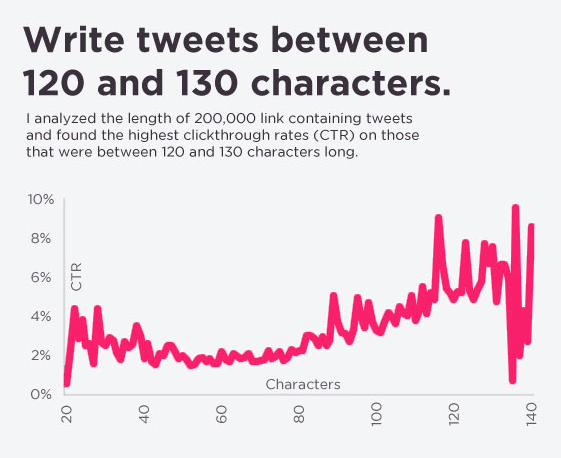
(Photo Credit Via Buffer)
#Hashtags. It is not a necessity but with specific posts #Hashtags can increase potential for engagement. Hashtags work very similarly to SEO optimized keywords on your website. Not there yet? Catch up on keywords, and loop back here when you finish up.
Here’s an example. When you attend your next conference, check to see the hashtag they are using. The hashtag will help attendees clearly interpret that the post is running with the conference, and when the user clicks the hashtag they will view all posts with that hashtag.
For that very reason, hashtags can be a great way to curate all posts associated with your event. Just don’t forget, short and sweet on Twitter. Buffer ran a study on the ideal hashtag limit, finding a negative response when multiple hashtags are used.
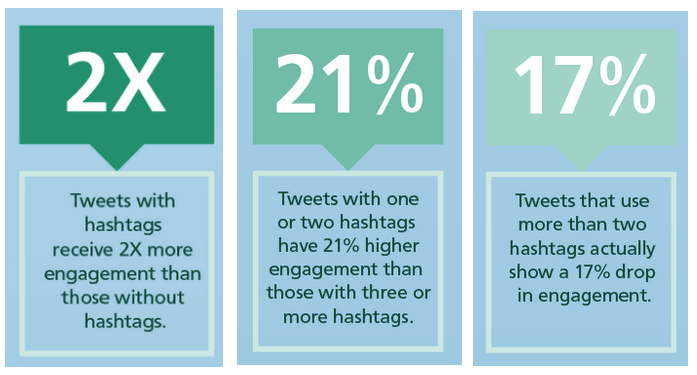
(Photo Credit Via Buffer)
Related Post: 10 Tips For Optimizing Your Linkedin Profile ➢
- 540 million users, with 256 million monthly active users.
- Professional headline: 100-120 characters
- Content options: Industry news. Gated Content. Event promotion. Thought leadership.
- Shine some light on your company culture and industry expertise. Empower your employees to share and comment on company posts. Post company offers, promotions or short videos from your Execs.
LinkedIn is the primary social media outlet for staffing and recruiting alike. Having an up-to-date account is crucial, but your interactions and the types of posts you’re sharing can be the difference between successful posts and a missed opportunity.
Company posts can be a great first step towards finding consistency of posts. Coordinate with other employees on your team, reposting their shared posts, commenting on posts and beginning the dialogue. It’s a tough expectation to assume interaction and comments on each of your posts. Establishing a cadence where your fellow employees can engage within your comments is a quick way to portray your posts as relevant and lead to connections interacting with you.
Improve Your Social Game with Parqa Marketing
Utilizing the power of Twitter and LinkedIn can give your recruiting firm a big boost in brand awareness. Want to learn more about how your can grow both your personal brand and the brand of your recruiting firm? Check out our latest webinar, where Parqa CEO Tony Sorensen shared how he grew his recruiting company’s LinkedIn followers from 0 to 20,000+ in just five years.
[/vc_column_text][vc_column_text]Watch Parqa’s Free 30-Minute Webinar: Growing Your Personal Brand on LinkedIn For Recruiters. LinkedIn is the go-to social network for recruiters, it’s never been more important to make sure your personal brand stands out online. Learn how to grow your business, and gain traction on LinkedIn, in this 30-Minute How-To Guide for Recruiters.


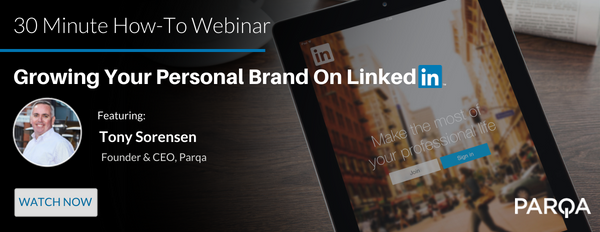




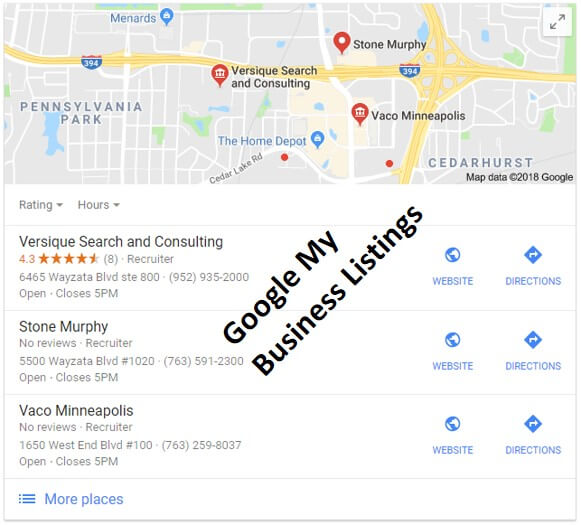
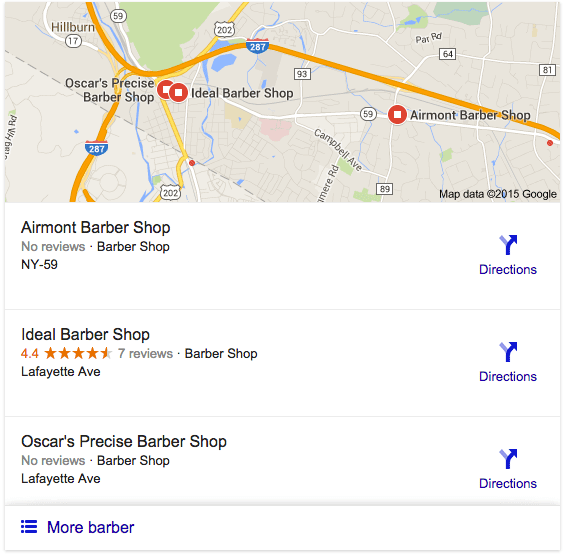 Have you ever done a google search and seen this (see right). This is known as the “local pack”, it showcases local businesses and stores relevant to the search query/term you entered, in this case it’s “barbershops.”
Have you ever done a google search and seen this (see right). This is known as the “local pack”, it showcases local businesses and stores relevant to the search query/term you entered, in this case it’s “barbershops.”





 If you don’t specialize in that area, it’s not likely your website has content around those keywords, so it’s not likely you are going to rank for that search at all. No chance of being found. (PS, we all know the importance of focusing on a niche industry and/or market is a whole different conversation.)
If you don’t specialize in that area, it’s not likely your website has content around those keywords, so it’s not likely you are going to rank for that search at all. No chance of being found. (PS, we all know the importance of focusing on a niche industry and/or market is a whole different conversation.)
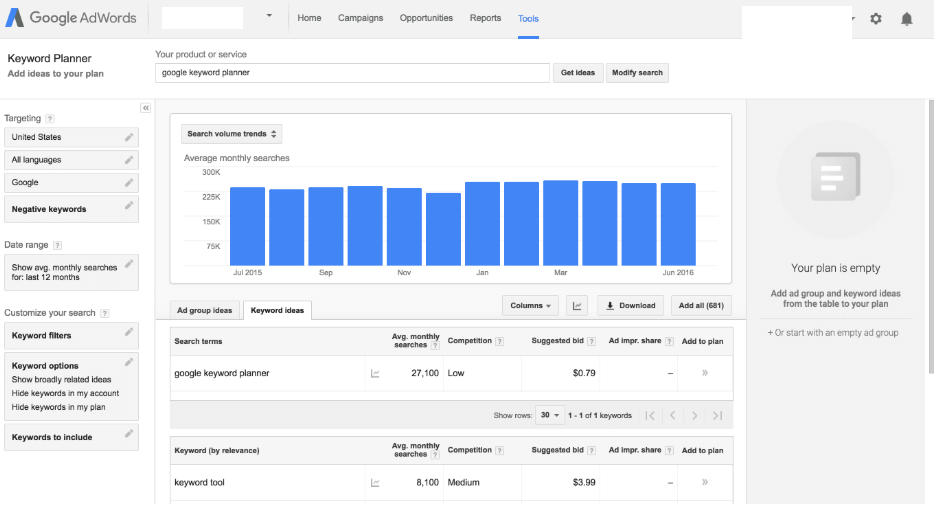 Make It Easy for Google to Find Your Blog
Make It Easy for Google to Find Your Blog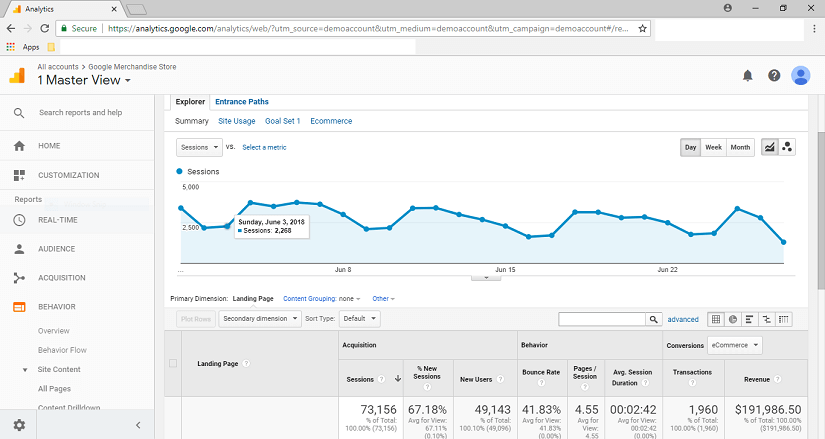

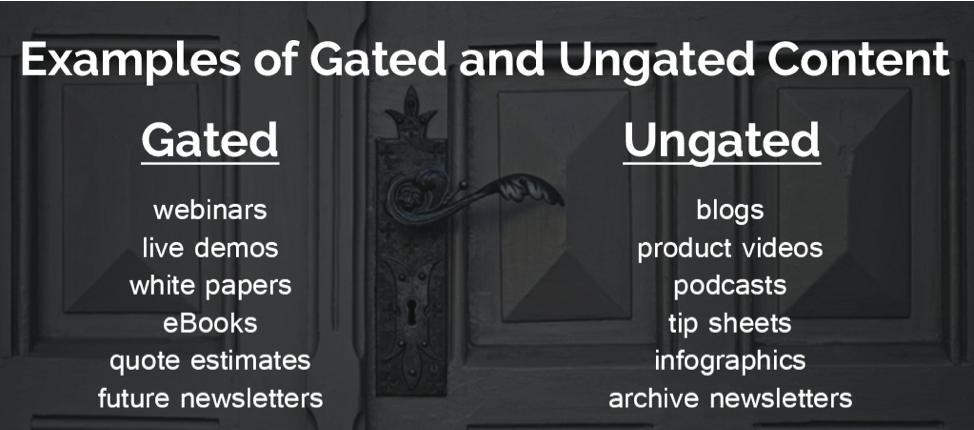


 “If you don’t have SEO in mind from the initial strategy session, you’re going to lose what you took so much time and effort to build. Everything from the structure of your website to the meta description of your website pages is important and should be taken into consideration.”
“If you don’t have SEO in mind from the initial strategy session, you’re going to lose what you took so much time and effort to build. Everything from the structure of your website to the meta description of your website pages is important and should be taken into consideration.” “All too often, when we’re brought in for SEO work on a redesign, it’s often late in the process, such as when the site is being coded or even totally complete. The advice that usually needs to be passed on at this point will most likely cost the company much more in design, coding, and more.”
“All too often, when we’re brought in for SEO work on a redesign, it’s often late in the process, such as when the site is being coded or even totally complete. The advice that usually needs to be passed on at this point will most likely cost the company much more in design, coding, and more.” “SEO is neuropsychology. SEO is conversion rate optimization. SEO is social media. SEO is user experience and design. SEO is branding. SEO is analytics. SEO is product. SEO is advertising. SEO is public relations. The fill-in-the-blank is SEO if that blank is anything that affects any input directly or indirectly.”
“SEO is neuropsychology. SEO is conversion rate optimization. SEO is social media. SEO is user experience and design. SEO is branding. SEO is analytics. SEO is product. SEO is advertising. SEO is public relations. The fill-in-the-blank is SEO if that blank is anything that affects any input directly or indirectly.”
